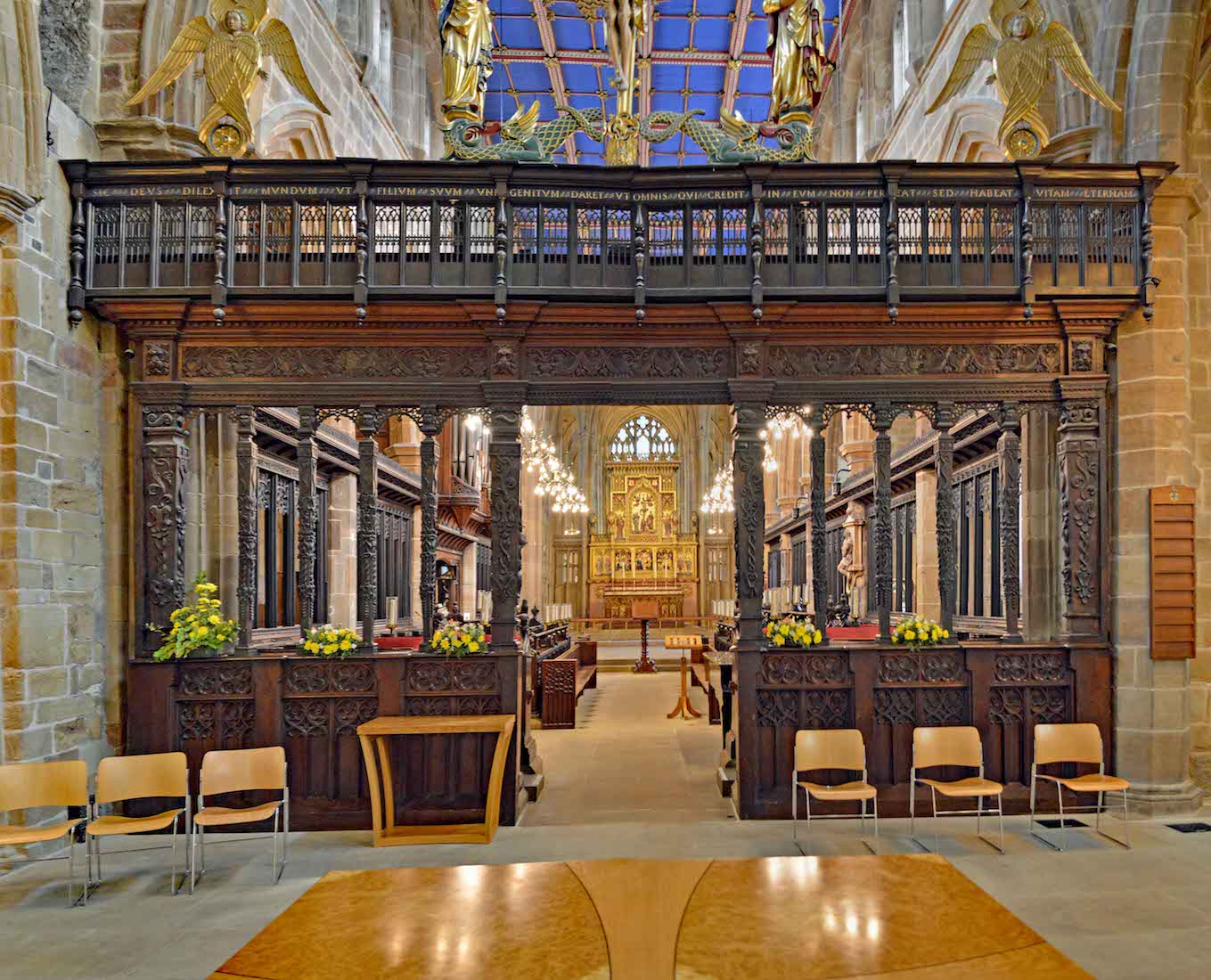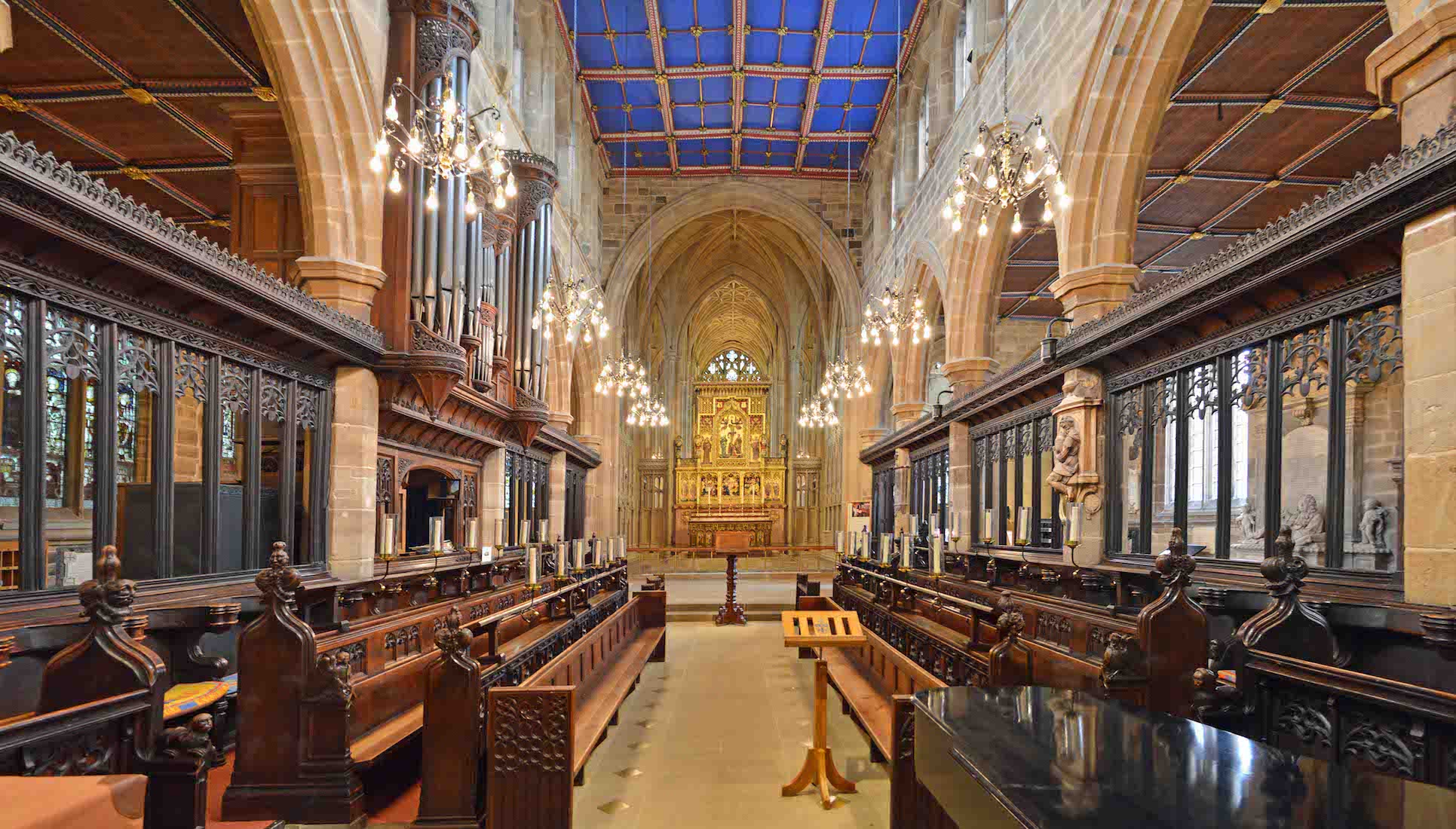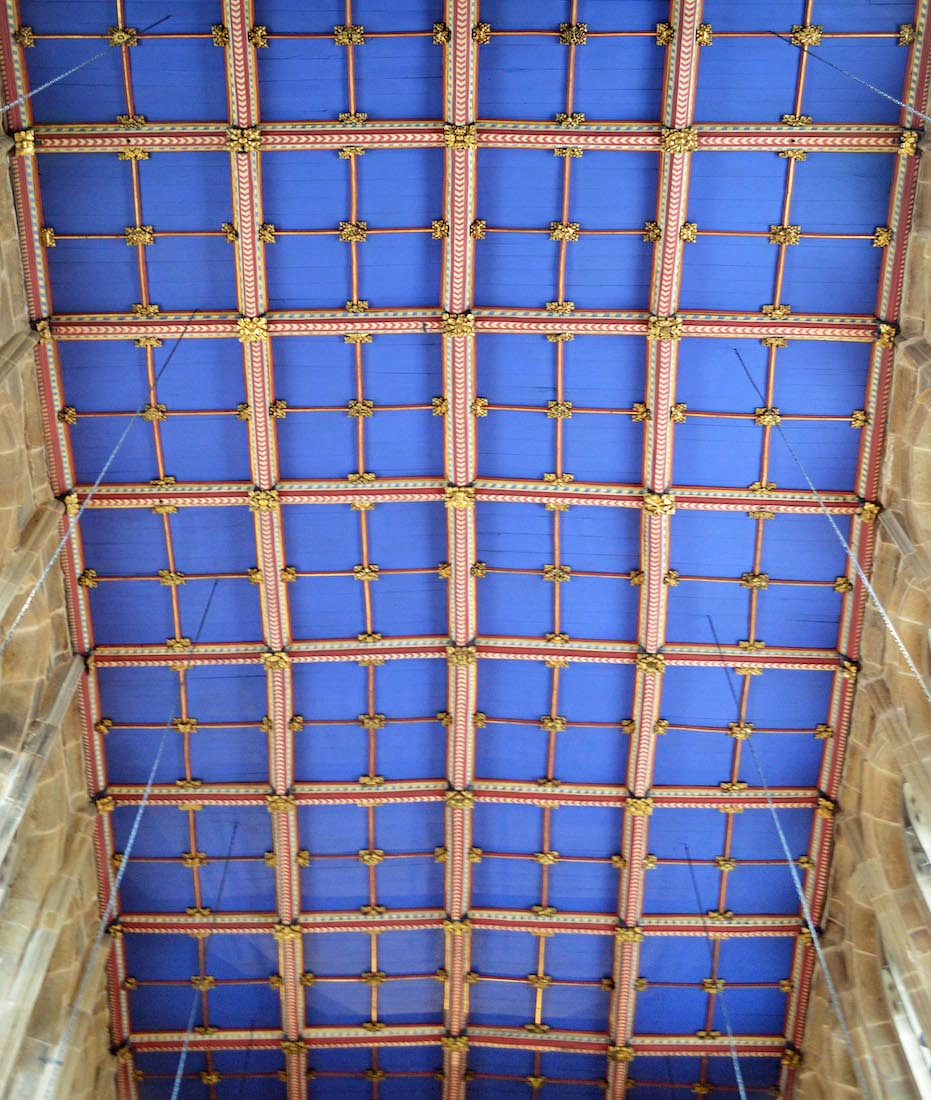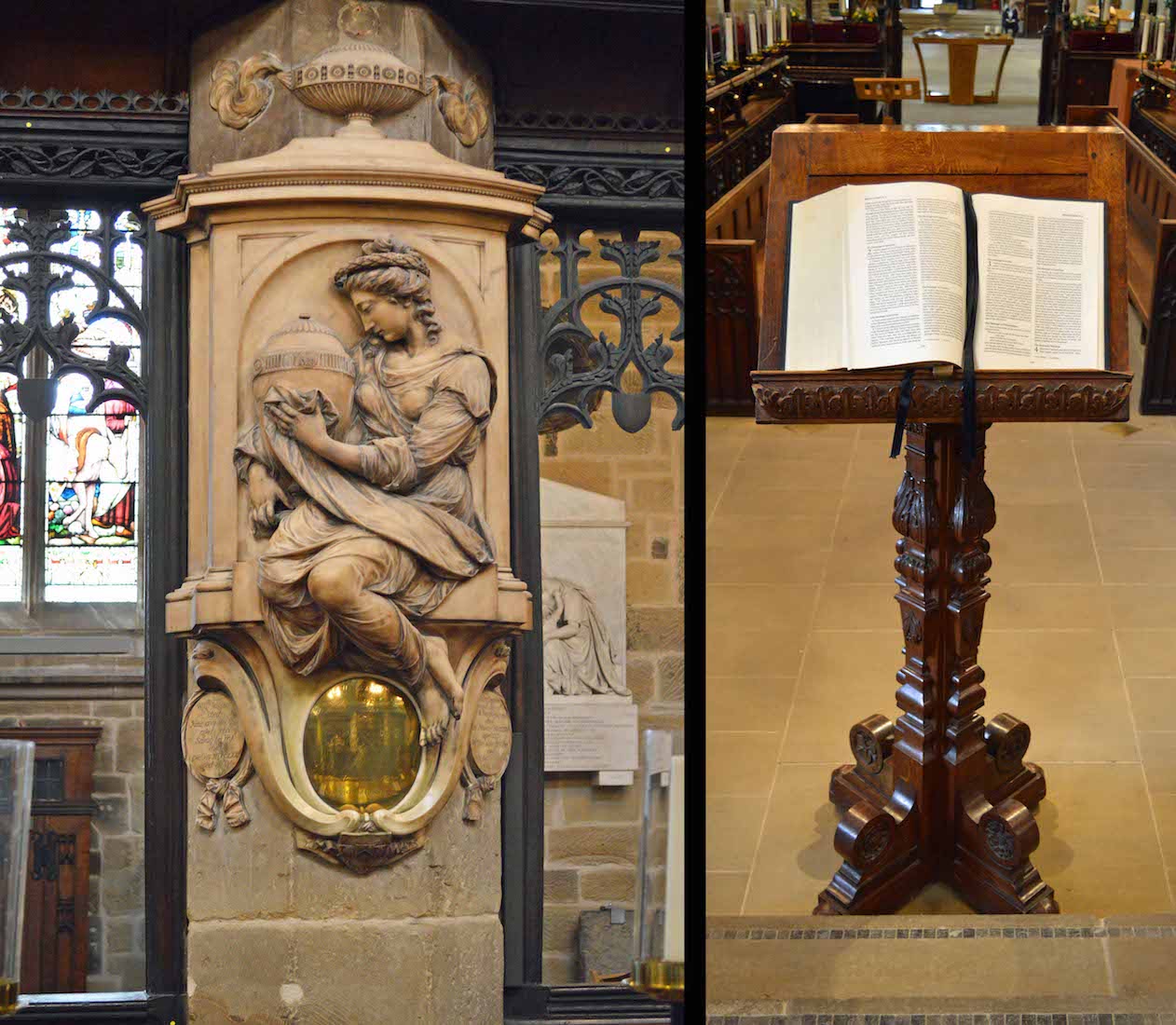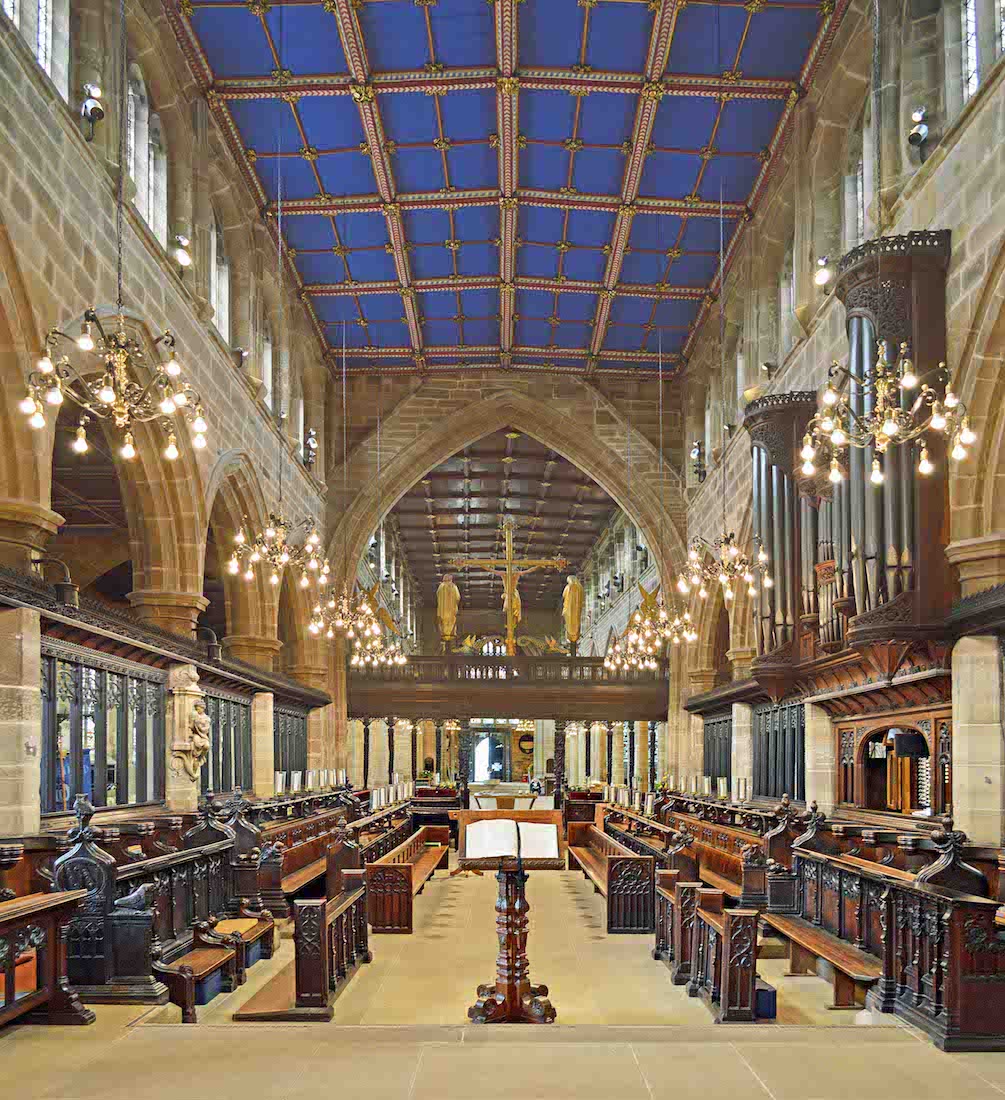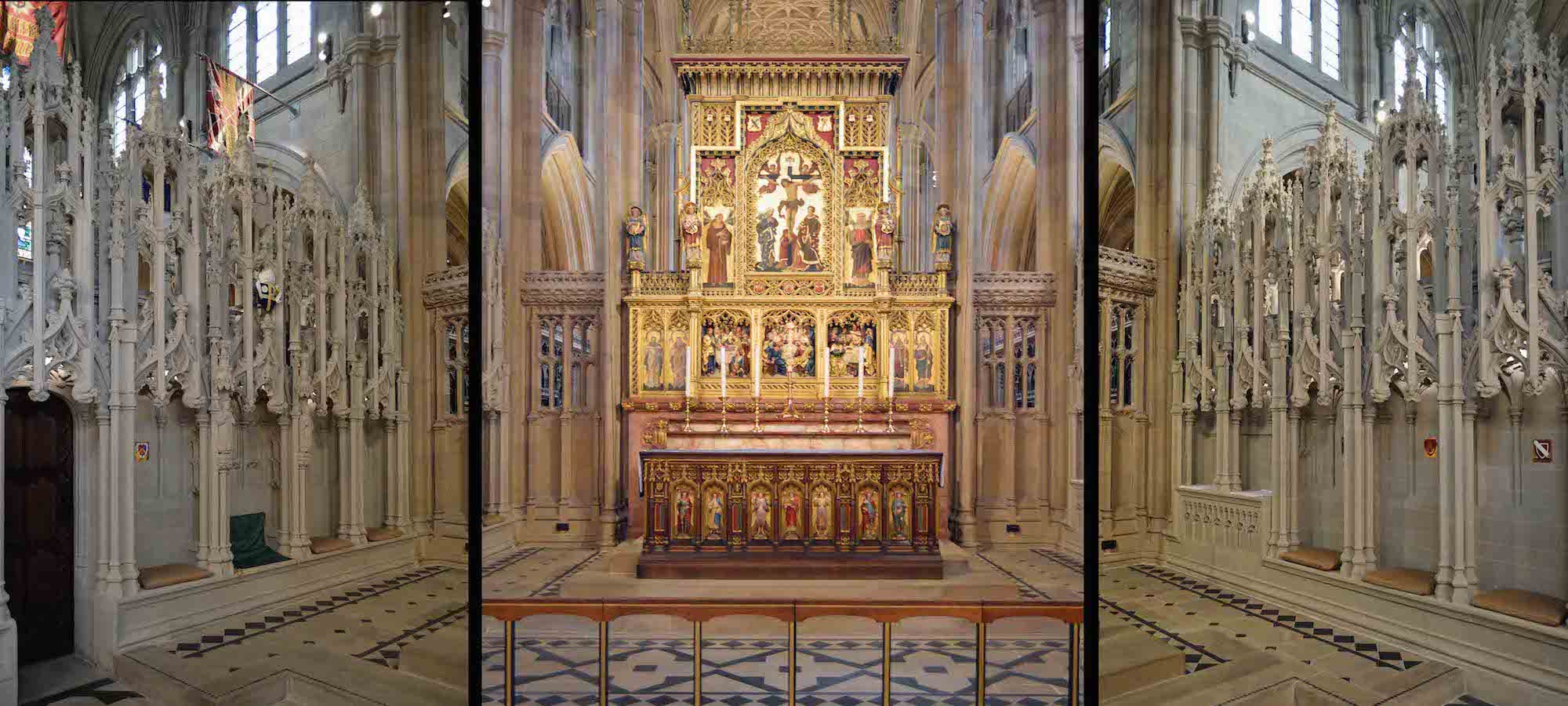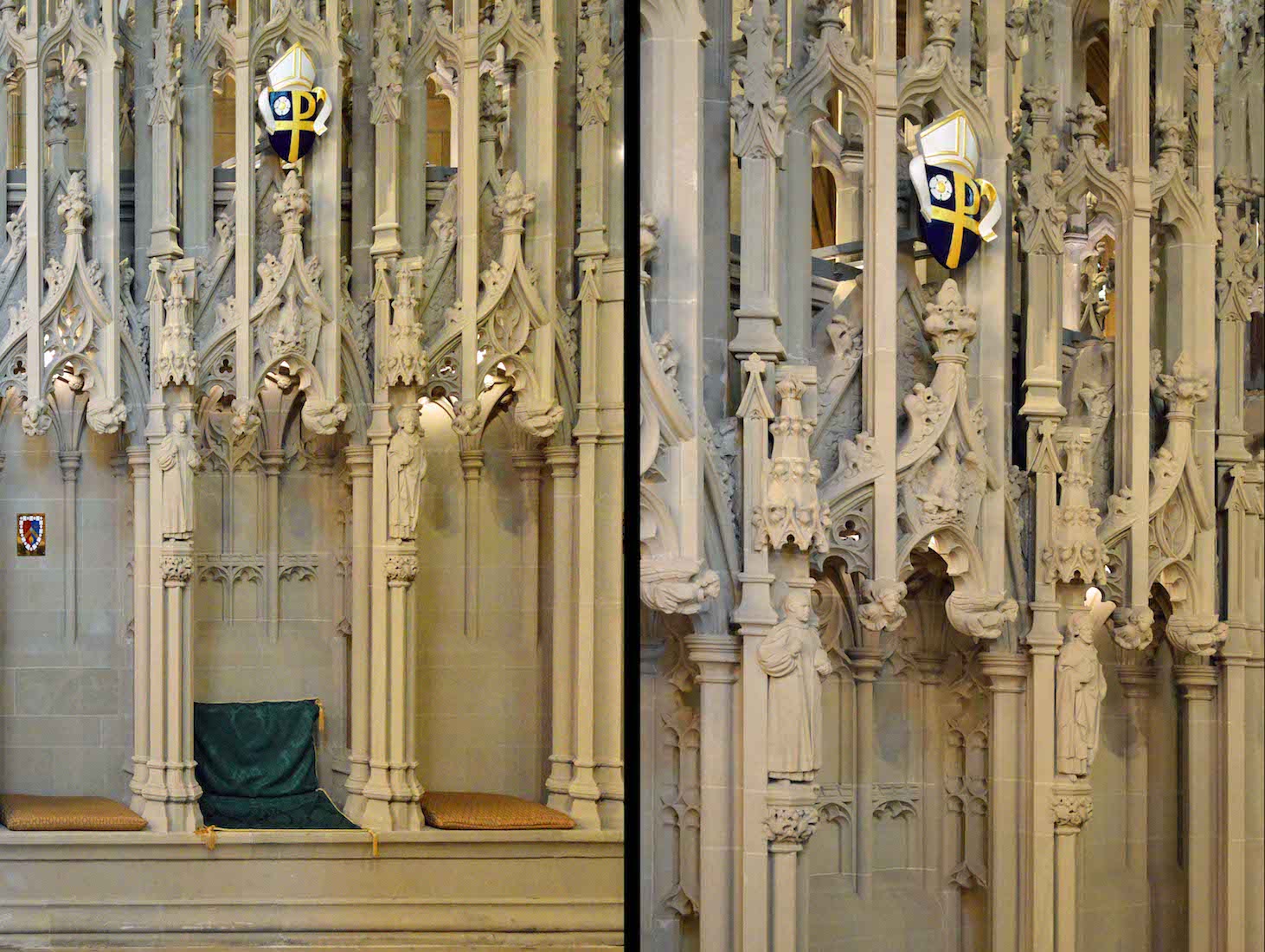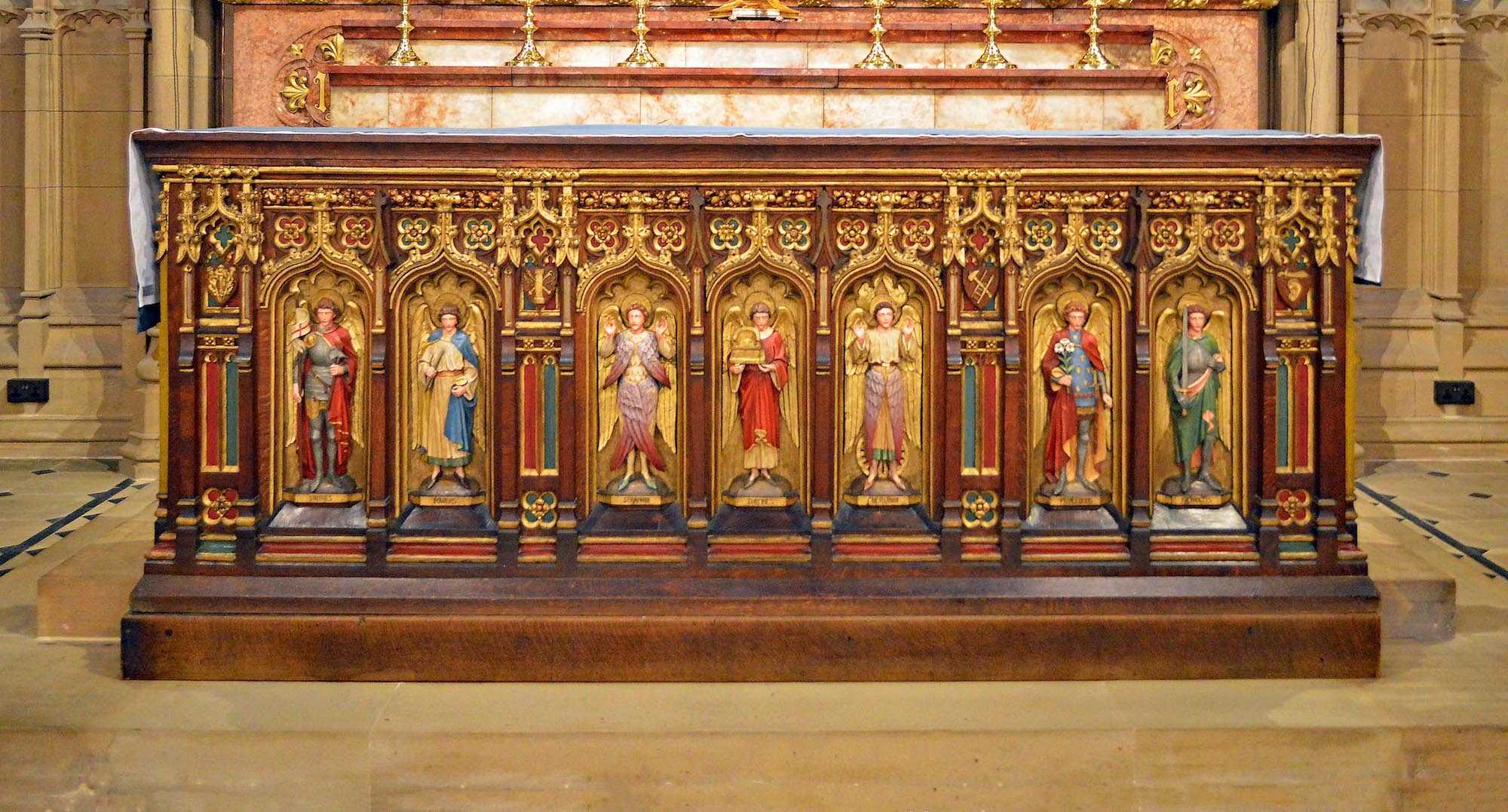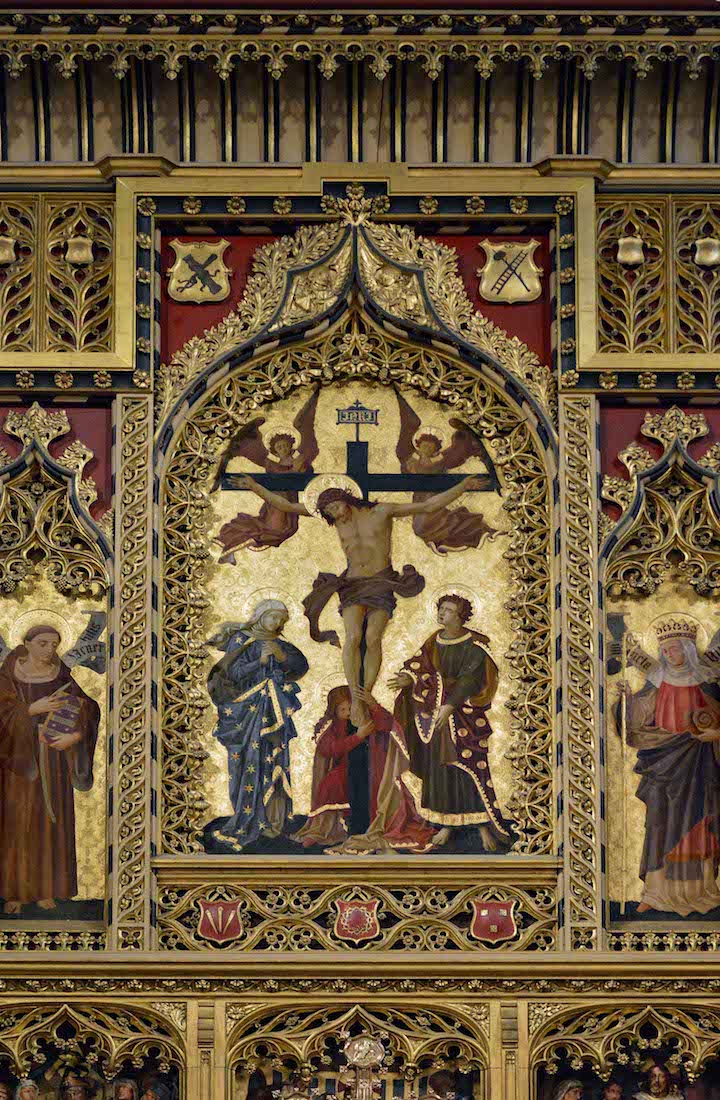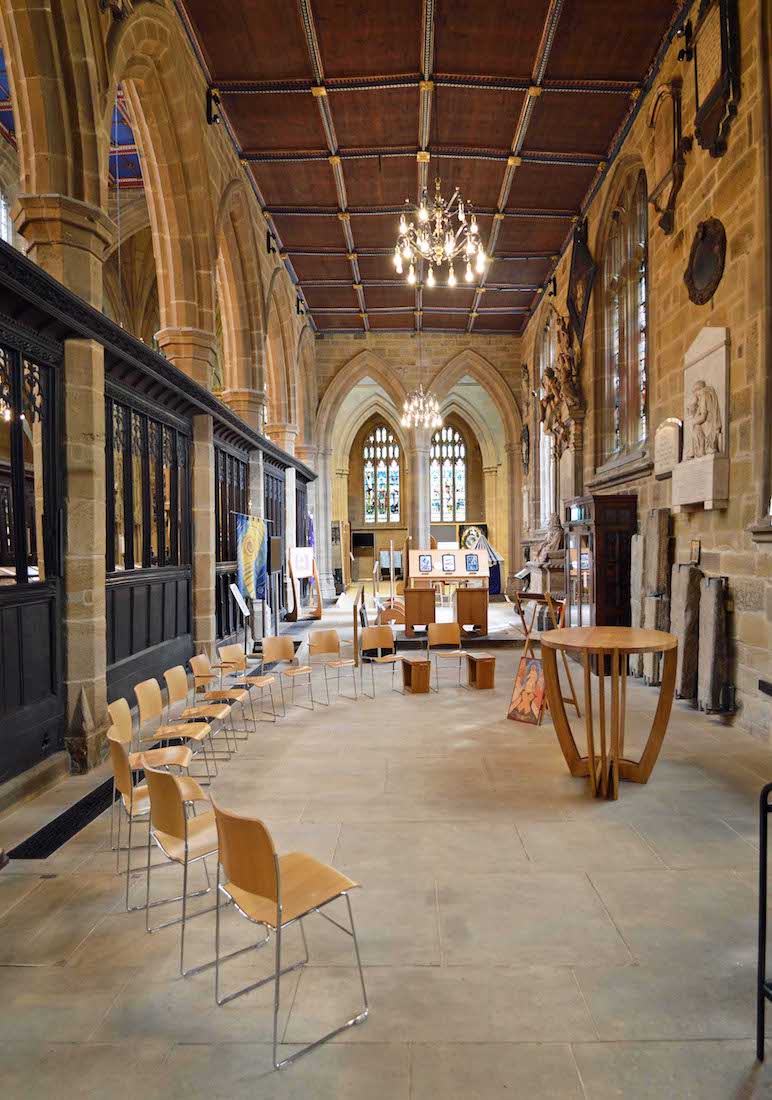
As we leave the Lady Chapel, we can look back to the East to get an overall view. PLAN
62. CRYPT, CHAPTER HOUSE
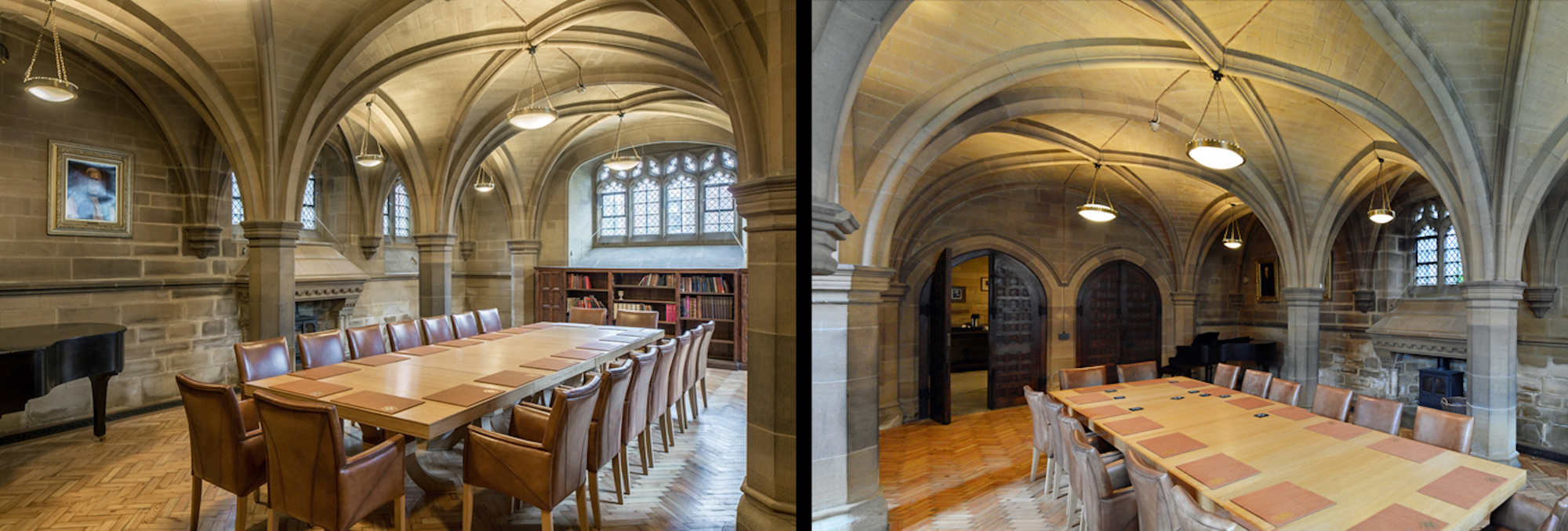
At this stage I am accompanied back to the North quire aisle, and down to the crypt. This was built as part of the Pearson extension at the turn of the twentieth century, and consists of a corridor with three rooms leading off it. The main room is the ‘Chapter House’ which lies beneath St Mark’s Chapel, and is now used as a meeting room.
63. SCREEN TO QUIRE
Returning to the front of the nave we face the rood screen, separating nave and quire. The main part of the wooden screen dates from 1635 and was the work of Francis Gunby of Leeds. It is domestic rather than religious in character, as befits the period. You might find a hare and a serpent! The lowest section of the screen is mainly Victorian, but does contain vestiges of medieval work.
65. QUIRE CEILING
The quire ceiling is fairly plain, with deep blue wooden planking, and a great number of small golden bosses.
66. QUIRE STALL CARVINGS
The quire stalls are somewhat restrained in their carved decoration, but worth closer inspection. The four examples on the right show a mythical animal with long claws, a recognizable Victorian angel, and two green men. The green man is primarily interpreted as a symbol of rebirth, representing the cycle of growth each spring.
67. MISERICORDS
Around 1905 local land owner Sir Thomas Savile gave the Cathedral the 15th-century choir stalls. Twenty-five of these have misericords and other carvings including a green man and mythical beasts.
68. ORGAN
The organ has an electro-pneumatic action. The large number of low-pitched stops reflects the particular acoustic of Wakefield Cathedral, where the lower pitches do not carry well through the building. While the organ is unmistakably English in character and well-suited to accompanying both choir and congregation, it is also remarkably versatile for recital work.
69. QUIRE MEMORIAL, LECTERN
The quire has its own lectern from which the Scripture is read. The memorial on the South wall is for William Ingram and his wife Sarah. It presumably shows the grieving widow holding an urn containing the remains of her husband.
70. QUIRE LOOKING WEST
From the sanctuary we can look back across the quire to the rood screen. Sir Thomas Savile, donator of the quire stalls, left his family emblem – an owl – on a bench end (bottom left).
71. SANCTUARY
The side walls of the sanctuary are lined with stone seats, or sedilia, which date from 1912 and are the work of Nathaniel Hitch, who worked closely with Pearson. The cathedra can be seen at left. But it is the high altar and reredos which draw our attention.
72. CATHEDRA
The cathedra is rather minimal when compared with other cathedras! A special cushion, and the coat of arms of the Anglican Diocese of Leeds above. The diocese has a new coat of arms which was created in 2014. It incorporates the Tau-Rho (the Greek letters T (Tau) and P (Rho), which was an early Christian monogram) and the Yorkshire rose.
73. HIGH ALTAR
The high altar is used for the celebration of the Sunday Choral Eucharist. It was the gift of Bishop Walsham How’s family and was designed by Frank Pearson. It is faced with carvings of the nine orders of angels as identified in the Middle Ages, with seven shown on the front and one on each side.
74. SANCTUARY REREDOS
The reredos is the work of John Oldrid Scott, and shows two contrasting styles. The upper and outer sections are painted and gilded with the principal scene depicting the Crucifixion. The three small panels above the altar show the Passover Meal, the Last Supper, and the Supper at Emmaus. The first is newly created, but the other two may be 16th century carvings discovered by Scott and inserted into his design.
75. SANCTUARY CRUCIFIXION SCENE
We conclude our tour of this Cathedral with the reredos Crucifixion Scene, which unusually shows Mary Magdalene(?) clutching the feet of Jesus.
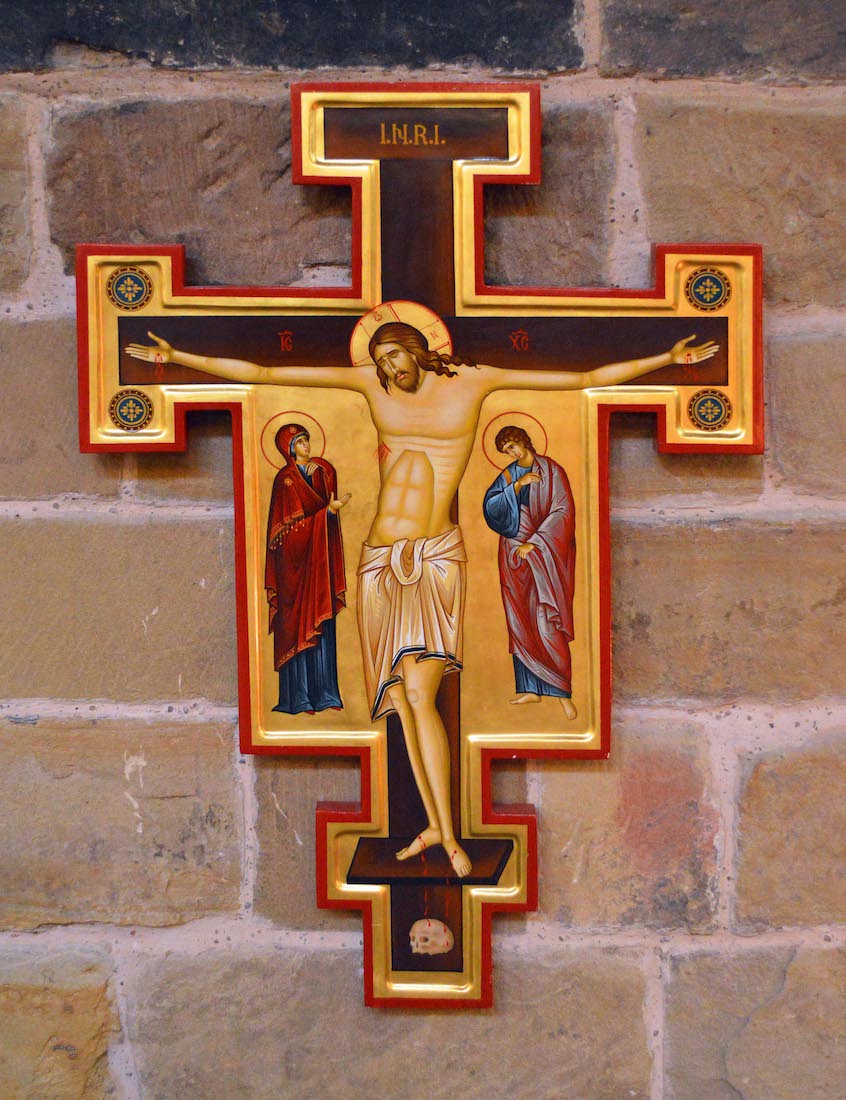
CONCLUSION
I hope you have enjoyed visiting Wakefield Cathedral with me. A lovely cathedral, filled with light and colour!
I am happy to receive constructive comments or corrections concerning this website. The best websites are the ones which have no errors! I am grateful to my wife Margie who has proof-read these pages.
The photographs on this site are mine, but I take little credit for the text which is largely drawn from the Cathedral booklet ‘Wakefield Cathedral’, and of course, Wikipedia.
Wakefield Cathedral has its own website with link:
https://www.wakefieldcathedral.org.uk/
The photographs which appear on this site can also be found in higher resolution at:
https://www.flickr.com/photos/paulscottinfo/sets/
Paul Scott Site created 02 / 2019 ; reformatted 06 / 2020


